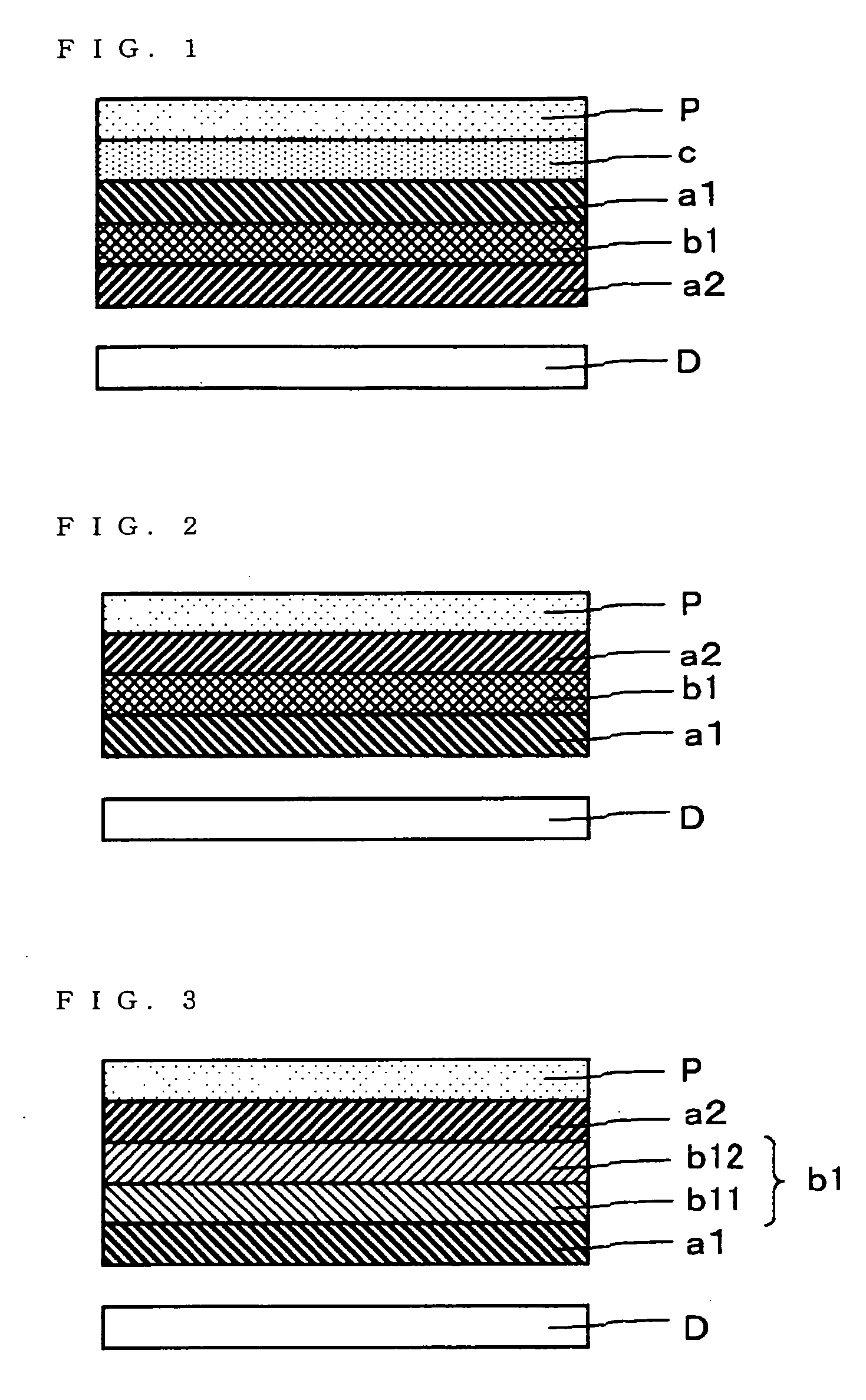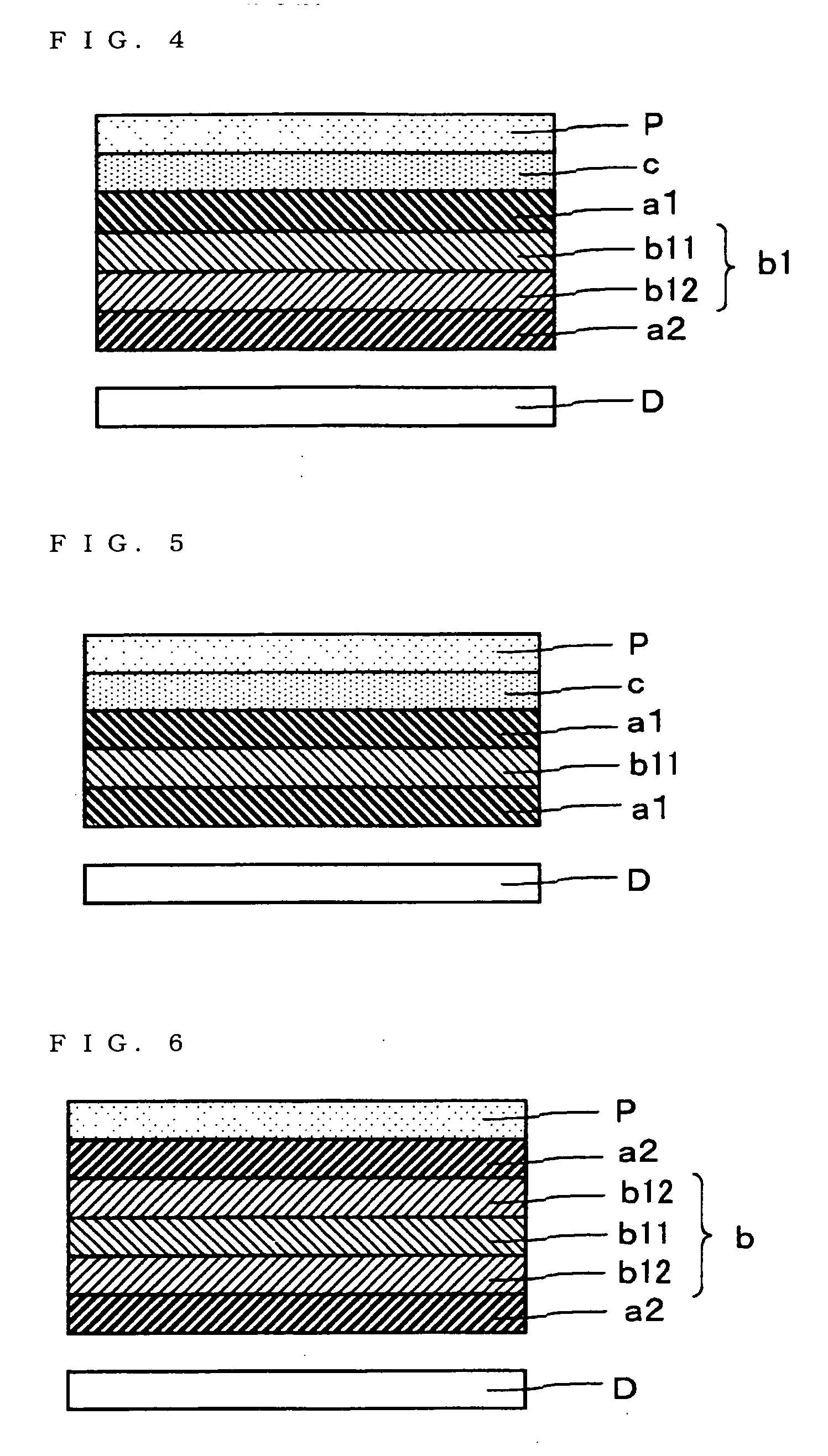Optical element, polarizing element, lighting device, and liquid crystal display
a technology of polarizing elements and optical elements, applied in the direction of polarizing elements, instruments, spectral modifiers, etc., can solve the problems of increased number of components of condensing elements, optical loss, visible surface defects, etc., and achieve enhanced brightness, convenient provision, and effective reflection
- Summary
- Abstract
- Description
- Claims
- Application Information
AI Technical Summary
Benefits of technology
Problems solved by technology
Method used
Image
Examples
example 1
[0158] A cholesteric liquid crystal layer having a selective reflection wavelength band in the range from 410 nm to 830 nm was used as a circular polarization type reflective polarizer (a1). DBEF manufactured by 3M was used as a linear polarization type reflective polarizer (a2).
[0159] A photopolymerizable nematic liquid crystal monomer (LC242 manufactured by BASF LTD.), a chiral agent (LC756 manufactured by BASF LTD.), a photoinitiator (Irgacure 907 manufactured by Ciba Specialty Chemicals Co.), and a solvent (toluene) were prepared and mixed to form a coating liquid having a selective reflection wavelength center of 350 nm. The coating liquid was applied to a commercially available PET film with a wire bar so as to provide a post-drying coating thickness of 6 μm, and then the solvent was dried off. Thereafter, the liquid crystal monomer was once heated to its isotropic transition temperature so that the solvent was dried off. The liquid crystal monomer was then gradually cooled t...
example 2
[0161] A biaxially-stretched polycarbonate film with a front retardation of 138 nm and an Nz coefficient of −1.2 was used as a quarter wavelength plate (c). The quarter wavelength plate (c) was combined with the members of Example 1 and laminated as shown in FIG. 4 to form a polarizing element. At this time, the transmission axis of the linear polarization type reflective polarizer (a2) and the slow axis of the uniaxial retardation layer (b12) were displaced by 45°.
example 3
[0162] A photopolymerizable nematic liquid crystal monomer (LC242 manufactured by BASF LTD.), a chiral agent (LC756 manufactured by BASF LTD.), a photoinitiator (Irgacure 907 manufactured by Ciba Specialty Chemicals Co.), and a solvent (toluene) were prepared and mixed to form a coating liquid having a selective reflection wavelength center of 350 nm. The coating liquid was applied with a wire bar to a PET film having a thin pre-coating of a lease treatment agent (octadecyltrimethoxysilane) so as to provide a post-drying coating thickness of 3 μm, and then the solvent was dried off. Thereafter, the liquid crystal monomer was once heated to its isotropic transition temperature so that the solvent was dried off. The liquid crystal monomer was then gradually cooled to form a layer having a uniform alignment state. The resulting film was exposed to UV so that the alignment state was fixed and a C-plate layer was formed. With respect to light with a wavelength of 550 nm, the retardation ...
PUM
| Property | Measurement | Unit |
|---|---|---|
| angle | aaaaa | aaaaa |
| angle | aaaaa | aaaaa |
| angle | aaaaa | aaaaa |
Abstract
Description
Claims
Application Information
 Login to View More
Login to View More - R&D
- Intellectual Property
- Life Sciences
- Materials
- Tech Scout
- Unparalleled Data Quality
- Higher Quality Content
- 60% Fewer Hallucinations
Browse by: Latest US Patents, China's latest patents, Technical Efficacy Thesaurus, Application Domain, Technology Topic, Popular Technical Reports.
© 2025 PatSnap. All rights reserved.Legal|Privacy policy|Modern Slavery Act Transparency Statement|Sitemap|About US| Contact US: help@patsnap.com



